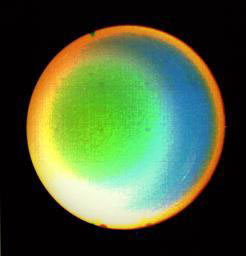This is an image of Uranus' atmosphere.
Click on image for full size
NASA
An Overview of Motions in Uranus' Atmosphere
Motions in the atmosphere include wind. The major winds in the Uranian atmosphere are the
zonal winds which consist of westward flowing zones and eastward flowing belts.
The other major means of motion in the atmosphere is by diffusion. There is a continual circulation within the atmosphere from the top to the bottom. Ethane diffuses down through the atmosphere and collects at the bottom where it breaks apart and becomes methane. The methane returns to the top of the atmosphere by diffusion. This constant breakdown and assembly of methane and ethane is part of the evolution of Uranus and affects its weather.
You might also be interested in:
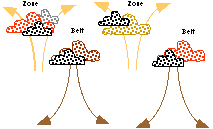
On Uranus, as on Jupiter, the winds in the belts and zones blow first in one direction, then in the opposite direction. Wind blows east in a belt, and west in a zone. The clouds rise up in a belt, and
...more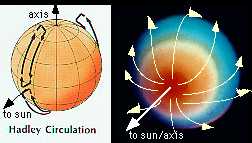
In general, the weather on earth can be described in the following way: in response to incoming energy from the sun, the air rises at the equator and drifts to the poles where it is colder. Because Uranus
...more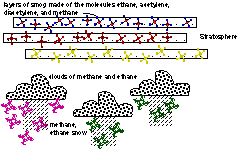
Besides methane, Uranus' atmosphere contains more sophisticated atmospheric molecules such as ethane gas, acetylene, and diacetylene. All these molecules form layers of haze at different altitudes high
...more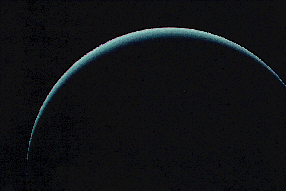
The mesosphere of Uranus is a region of balance between warming and cooling. That essentially means that nothing happens there. Except for diffusion, the atmosphere is still. Upper reaches of the atmosphere,
...more
As on Earth, the atmosphere of Uranus consists of a troposphere, stratosphere, mesosphere, and thermosphere. The troposphere is the region where the visible clouds are to be found. The stratosphere, as
...more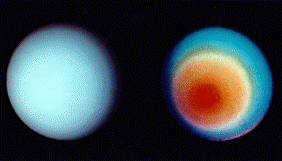
The striped cloud bands on Uranus, like Jupiter, are divided into belts and zones. On Uranus the belts and zones are hard to distinquish. The left picture shows the north pole of Uranus. In this picture
...more
The clouds of Uranus, composed of methane crystals, are found very low in the troposphere, and are difficult to distinquish below the smog haz es of the planet's atmosphere. False color is used, in the
...more


